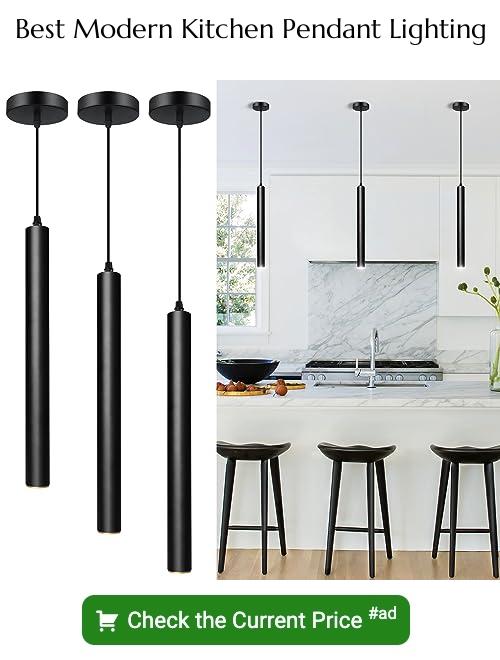Last updated on
Discover the art of seamlessly pairing kitchen and dining lights to create a harmonious ambiance that elevates your culinary experiences and enhances your home’s aesthetic appeal.
Welcome to the ultimate guide on how to pair kitchen and dining lights! One of the most important aspects of home decor is lighting, and it can make all the difference in creating a cozy and inviting atmosphere. Whether you’re renovating your kitchen or just looking for a way to spruce up your dining area, choosing the right lighting can be overwhelming.
But fear not! In this article, we’ll walk you through everything you need to know about pairing kitchen and dining lights for maximum style and functionality. So grab a cup of coffee (or tea) and let’s get started!
Key takeaways:
- Assess your space before selecting light fixtures.
- Choose light fixtures that match your style and enhance functionality.
- Select the appropriate type of lights for each area (kitchen vs. dining).
- Consider the function of each space and balance light intensity.
- Coordinate colors, materials, and shapes for a cohesive look.
What's Inside
Assessing Your Space
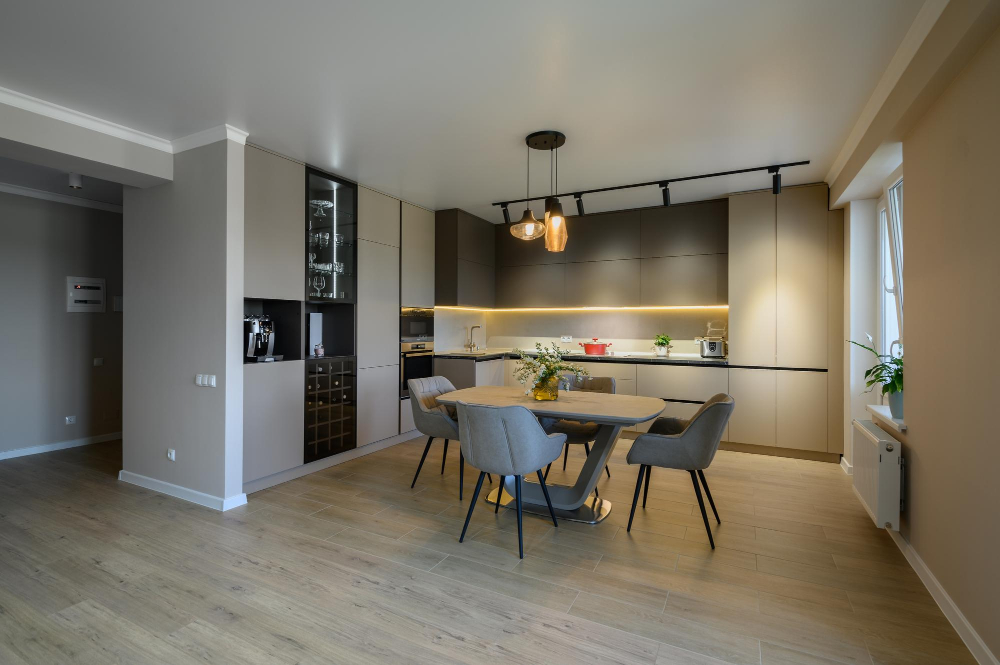
Before you start selecting light fixtures, it’s important to assess your kitchen and dining space. Consider the size of the area, ceiling height, natural lighting sources such as windows or skylights, and any existing electrical wiring.
Take note of any architectural features that you want to highlight with lighting.
Assessing your space will help determine what type of lights are appropriate for each area. For example, pendant lights work well over a kitchen island or dining table but may not be suitable for low ceilings.
Recessed lighting is great for providing ambient light in larger spaces but can create shadows if used alone.
Consider how much task lighting is needed in areas where food preparation takes place such as countertops and stovetops. Task lighting should be bright enough to provide ample illumination without creating glare or shadows.
Choosing the Right Light Fixtures
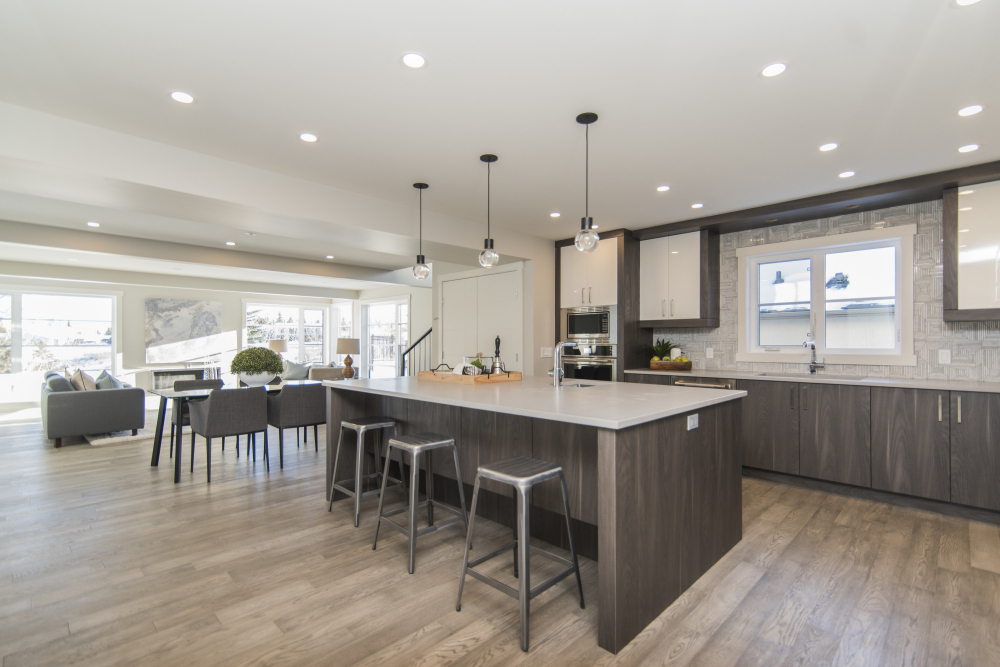
Once you have a clear idea of what you need, it’s time to start exploring different types of lighting options that will complement your style and enhance functionality.
When selecting light fixtures, consider factors such as size, shape, color scheme, material composition and overall design aesthetic. Pendant lights are an excellent choice for adding visual interest to any room while providing ample illumination over a specific area like a kitchen island or dining table.
Chandeliers can also be used in both spaces but should be chosen carefully based on their size relative to the room’s dimensions. Wall sconces are another option that can add warmth and ambiance without taking up valuable floor space.
Defining Your Style
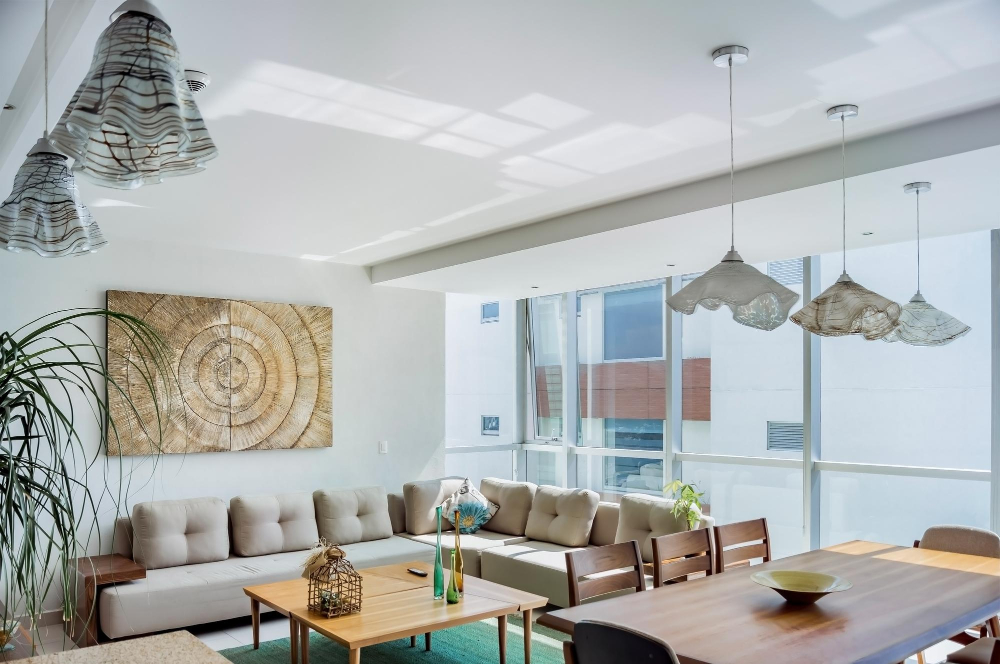
Are you going for a modern look or something more traditional? Do you prefer sleek and minimalistic designs or ornate and decorative ones? Defining your style will help narrow down the options and make the selection process much easier.
Consider the overall aesthetic of your home when choosing kitchen and dining lights. If you have an open floor plan, ensure that both areas complement each other in terms of design elements such as color schemes, materials used, shapes of furniture pieces etc.
If unsure about what style suits best with your space, browse through interior design magazines or online platforms like Pinterest to get inspiration on different styles that may appeal to you. Remember that lighting is not just functional but also adds character to a room; therefore choose fixtures that reflect who you are while still being practical.
Selecting the Right Type of Lights
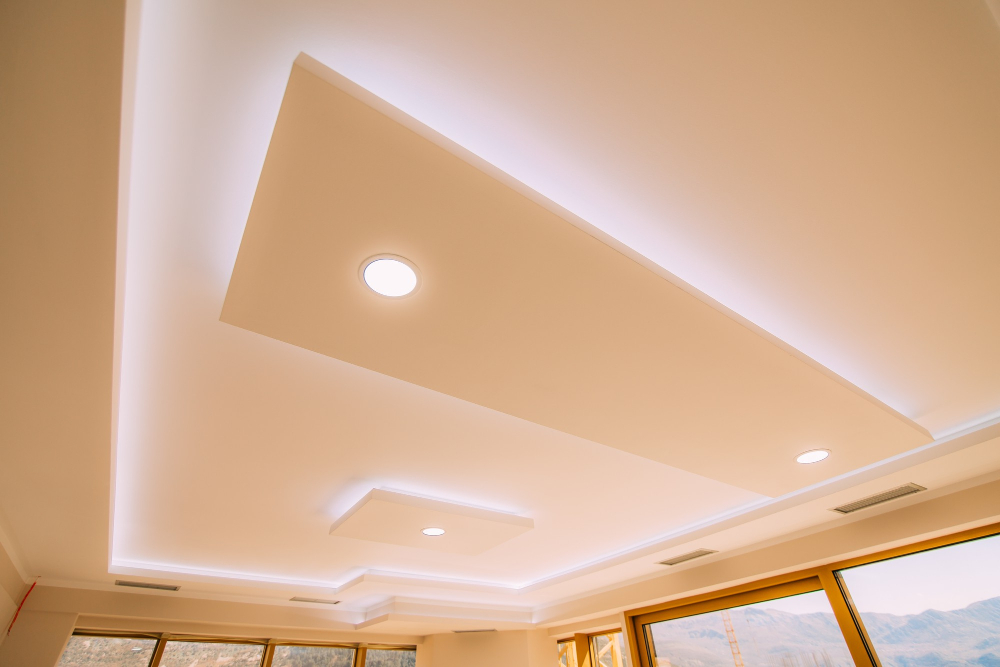
First, think about the function of each space. The kitchen is typically a workspace where you need bright task lighting for cooking and food preparation.
On the other hand, dining areas require more ambient lighting that creates a warm and inviting atmosphere.
For kitchens, recessed or track lighting can provide ample task lighting without taking up too much visual space in smaller rooms. Pendant lights over an island or sink can also add style while providing focused light where you need it most.
In dining areas, chandeliers or pendant lights above the table create a focal point while providing ambient light that’s perfect for entertaining guests during dinner parties.
Considering the Light Function
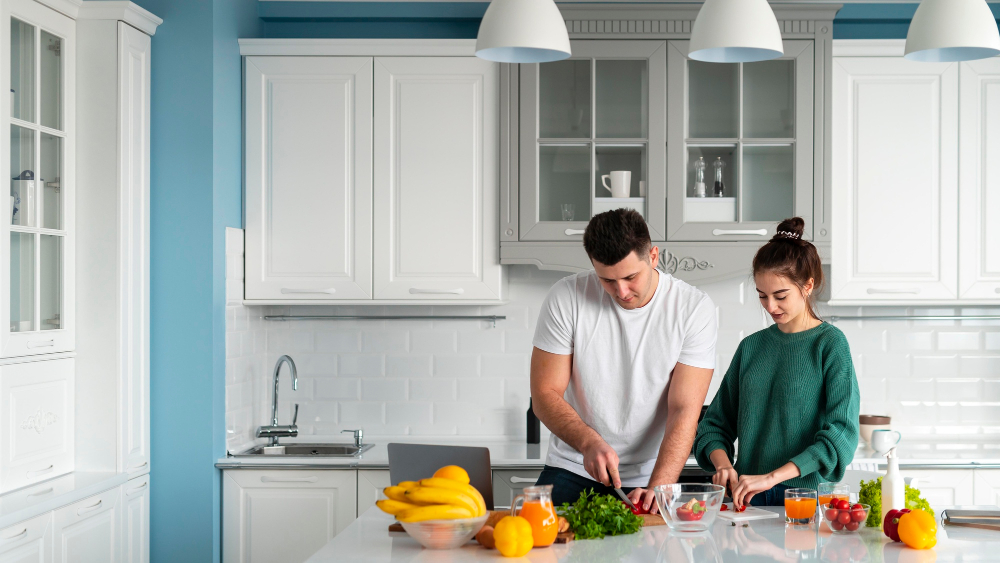
Different areas in your kitchen and dining room require different types of lighting depending on their purpose. For example, you’ll need brighter task lighting for food preparation areas in your kitchen but softer ambient lighting for a cozy dinner party ambiance.
Before selecting any light fixtures, assess how each area will be used and what type of activities will take place there. This way, you can choose appropriate fixtures that provide adequate illumination while also creating a comfortable atmosphere.
In addition to considering the function of each space individually, think about how they work together as well. The transition from cooking area to eating area should feel seamless with consistent levels of brightness throughout both spaces.
Layering Lights for Functionality
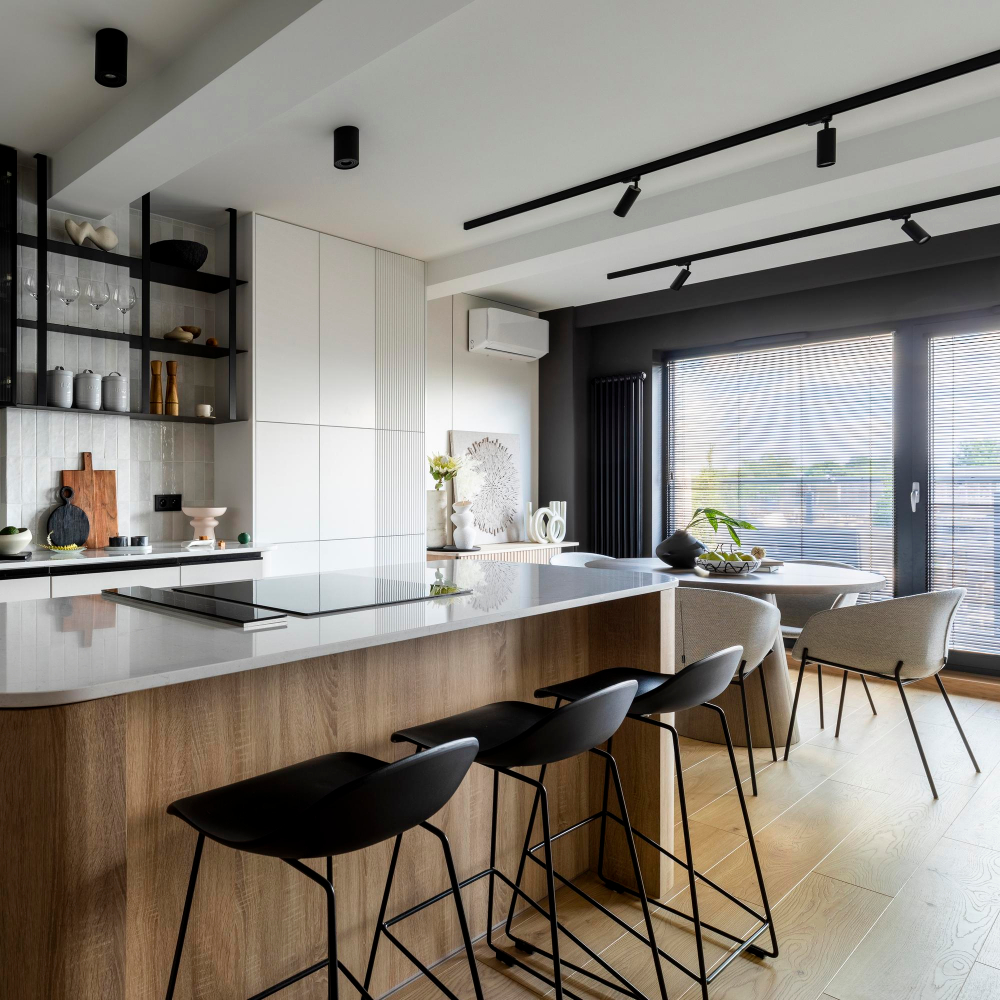
Layering your lighting sources can help you achieve both style and practicality in your space. By combining different types of light fixtures, you can create a well-lit environment that meets all your needs.
For instance, consider installing recessed lights or track lighting to provide general illumination throughout the room. These types of fixtures are perfect for creating an even distribution of light that illuminates every corner.
Next, add task lighting to specific areas where you need more focused illumination such as above the sink or stove area in the kitchen or over a buffet table in the dining area. Pendant lights are great options for this purpose because they offer direct downlighting while also adding visual interest to space.
Don’t forget about accent lighting! This type of fixture adds depth and dimension by highlighting key features such as artwork on walls or decorative elements like plants on shelves.
Matching Kitchen and Dining Area Styles
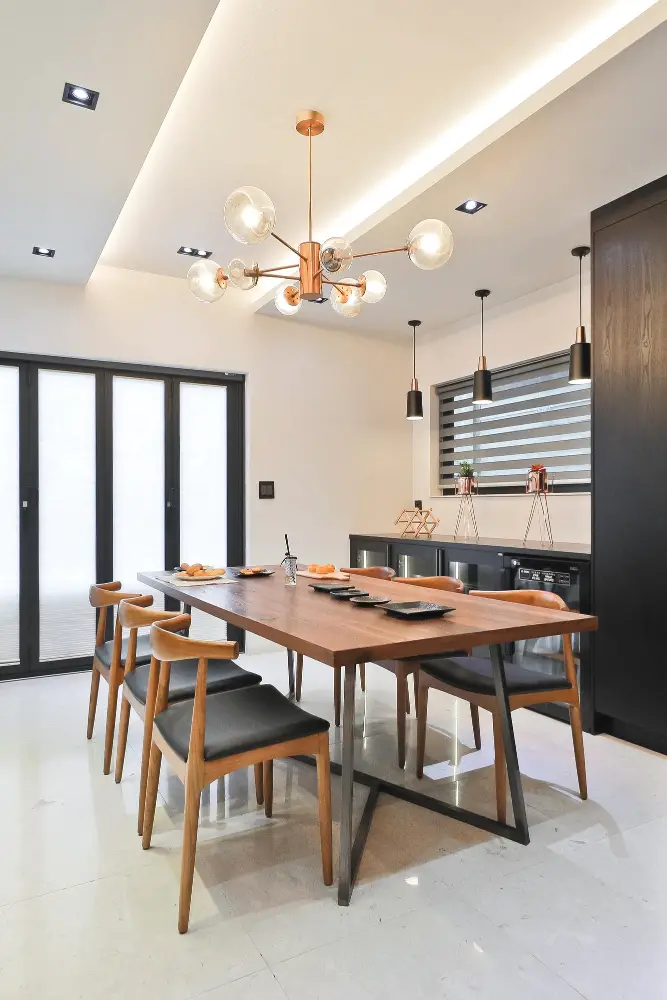
Your lighting fixtures should complement your existing decor, rather than clash with it. If you have a modern kitchen with sleek lines and minimalist design elements, you’ll want to choose light fixtures that reflect that aesthetic.
On the other hand, if your dining area has a more traditional feel with ornate details and warm colors, you’ll want lighting that matches those features.
To achieve harmony between these two spaces in terms of style requires careful consideration when selecting light fixtures for each space. You can start by identifying commonalities between both areas such as color schemes or materials used in furniture or accessories.
For example: If your kitchen cabinets are made from natural wood tones like oak or maple while your dining table is also wooden but painted white; then choosing pendant lights made from similar wood finishes will help create continuity throughout both spaces without being too matchy-matchy.
Coordinating Colors and Materials
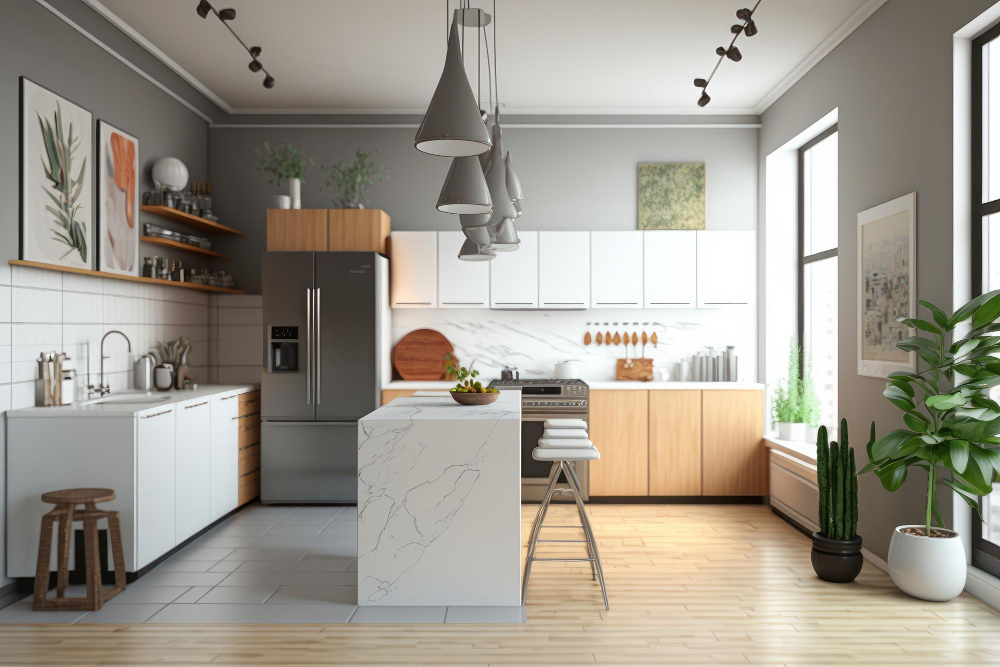
You want your lighting fixtures to complement the overall design of your space, not clash with it. To achieve a cohesive look, consider matching the colors of your light fixtures with other elements in the room such as cabinets or furniture.
Materials are also an important factor when coordinating lighting fixtures in both areas. For example, if you have stainless steel appliances in your kitchen area, you may want to choose light fixtures that feature similar metallic finishes for consistency.
In addition to color and material coordination between kitchen and dining areas’ lighting fixture choices; there should be harmony within each area’s individual style too! If one room has a modern feel while another leans towards traditional decor styles – make sure their respective lights match accordingly!.
Combining Different Light Sources
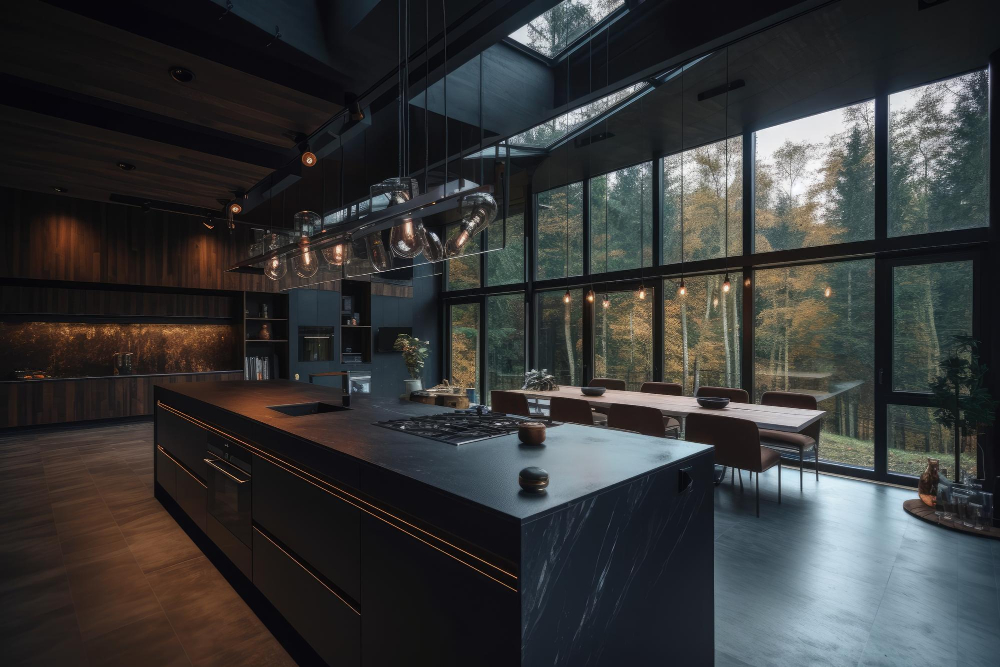
This technique allows you to layer lighting for functionality while also creating an ambiance that suits your style.
For instance, you can use pendant lights over the kitchen island or dining table as task lighting, while recessed lights provide ambient illumination throughout the space. You can also add accent lighting with wall sconces or under-cabinet lights to highlight specific areas such as artwork or decorative pieces.
By using multiple light sources, you can adjust the intensity of each one according to your needs and preferences. For example, if you’re hosting a dinner party in your dining room, dimming down overhead fixtures creates a cozy ambiance that encourages conversation.
When combining different light sources in both spaces ensure they complement each other without overpowering one another; this will help achieve balance between function and aesthetics.
Balancing Proportions and Size
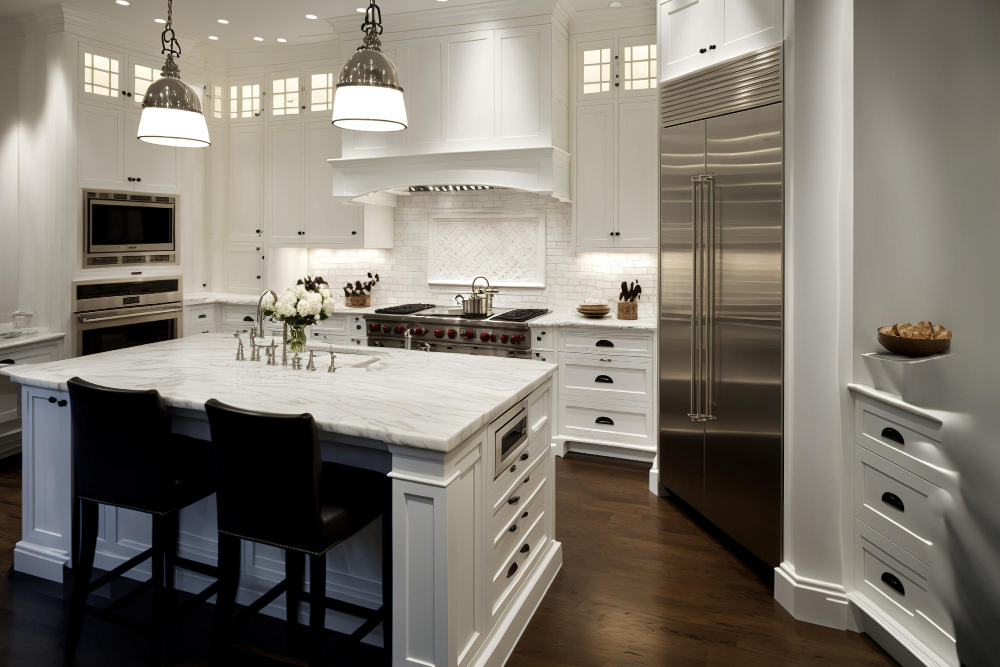
The size of your light fixtures should be in balance with the size of your space. A large chandelier may look stunning in a grand dining room, but it could overwhelm a smaller kitchen or breakfast nook.
Similarly, if you have high ceilings or an open floor plan, you’ll want larger fixtures that can fill the space without looking out of place. On the other hand, if you have lower ceilings or limited square footage, smaller fixtures will work better.
To strike a balance between proportions and size when choosing light fixtures for your kitchen and dining area:.
- Measure your space: Take accurate measurements so that you know what sizes will fit comfortably.
- Consider ceiling height: If you have high ceilings (over 9 feet), choose taller lighting options like pendant lights or chandeliers.
- Think about table shape: Round tables pair well with round-shaped pendants while rectangular tables are best suited for linear-shaped lighting options such as linear suspensions.
- By keeping these tips in mind when selecting light fittings for both areas; not only do they complement each other but also create an aesthetically pleasing environment where everything looks balanced!
Harmonizing Fixture Shapes and Sizes
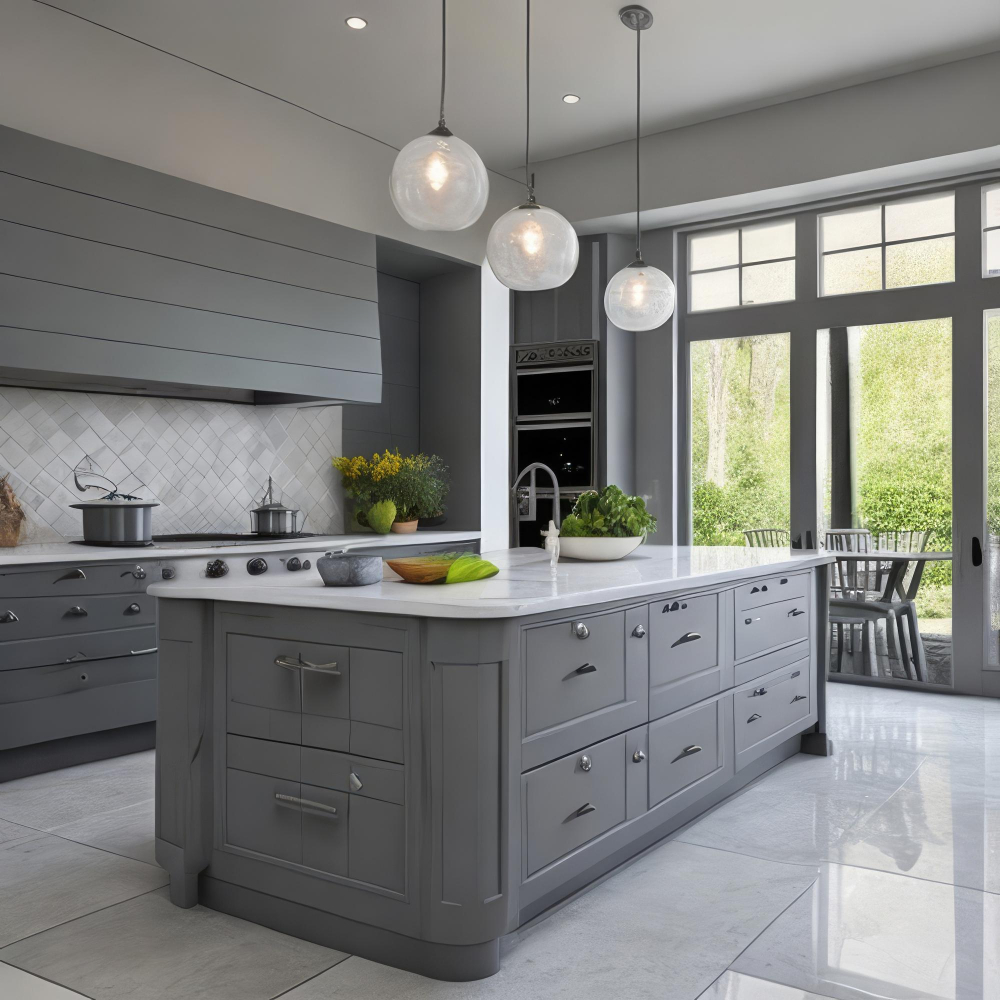
The right combination can create a cohesive look that ties your space together, while mismatched fixtures can make your decor feel disjointed.
To achieve harmony in shape and size, start by assessing the overall style of your home. If you have a modern or minimalist aesthetic, sleek geometric shapes may be more appropriate for both areas.
On the other hand, if you prefer a traditional or rustic look, consider fixtures with curved lines or ornate details.
Another key consideration is proportionality – larger spaces require bigger light fixtures while smaller ones need smaller ones so as not to overwhelm them visually. For instance; an oversized chandelier might work well in an expansive dining room but would overpower a small breakfast nook.
In addition to matching styles between kitchen and dining areas when harmonizing fixture shapes & sizes also ensure that each area has its own unique focal point without clashing with each other’s design elements.
Aligning Light Heights for Continuity
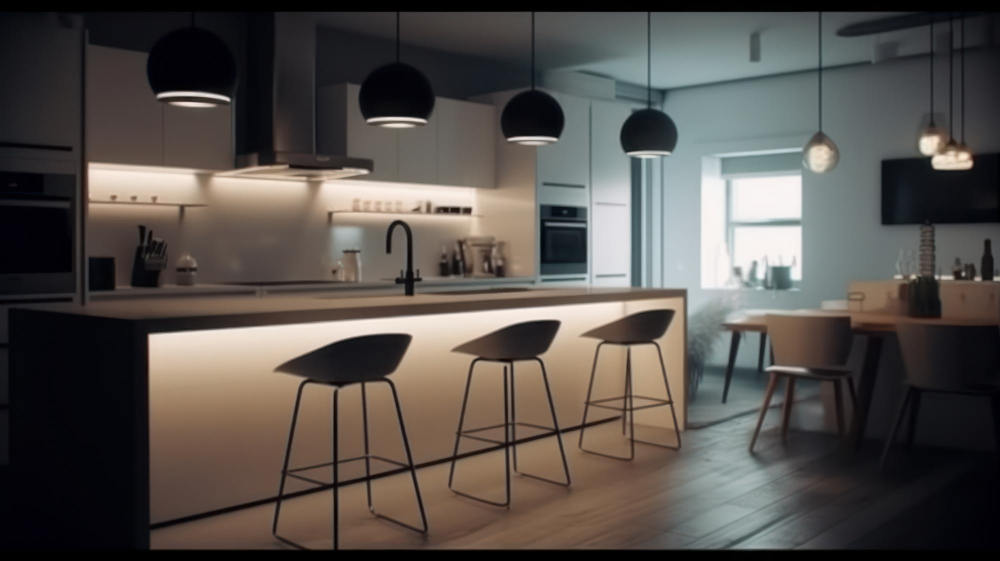
The height of your lighting fixtures can make or break the overall look and feel of your space. To ensure that everything looks cohesive, you need to pay attention to the placement of each fixture.
For instance, if you have a pendant light above your kitchen island, consider hanging another pendant at a similar height over the dining table. This creates visual harmony between both areas while also providing adequate illumination for both tasks.
On the other hand, if you have recessed lights in your kitchen ceiling but want something different for your dining area’s overhead lighting source – like chandeliers or pendants – be sure they are hung at an appropriate distance from one another so that they don’t clash visually.
Keeping Consistency in Design
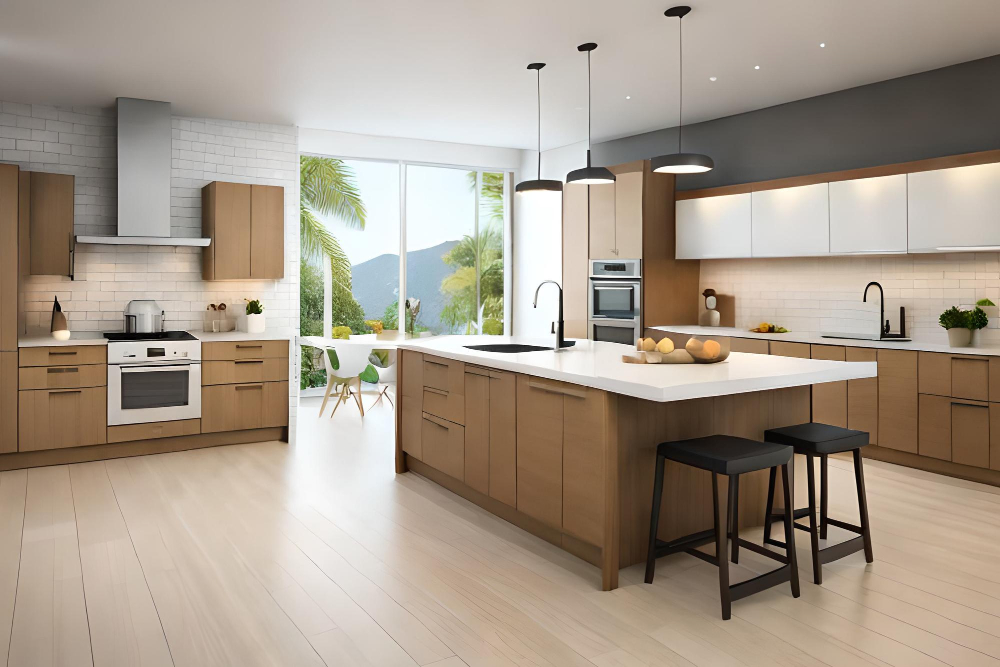
You want your lighting fixtures to complement each other and create a cohesive look throughout the space. To achieve this, start by defining your style and selecting light fixtures that match it.
For example, if you have a modern kitchen with clean lines and minimalistic design elements, choose pendant lights or chandeliers with sleek shapes and metallic finishes for your dining area. This will help tie the two spaces together visually.
Another way to maintain consistency in design is by coordinating colors and materials between the two areas. If you have wooden cabinets in your kitchen, consider incorporating wood accents into your dining room lighting fixtures as well.
By keeping these factors consistent across both spaces – style, shape/size of fixture(s), color/materials – you’ll be able to create an overall aesthetic that feels intentional rather than haphazardly thrown together.
Remember: while variety can add interest when done correctly (such as combining different types of light sources), too much variation can make a space feel disjointed or cluttered.
Installing Lights At the Proper Height
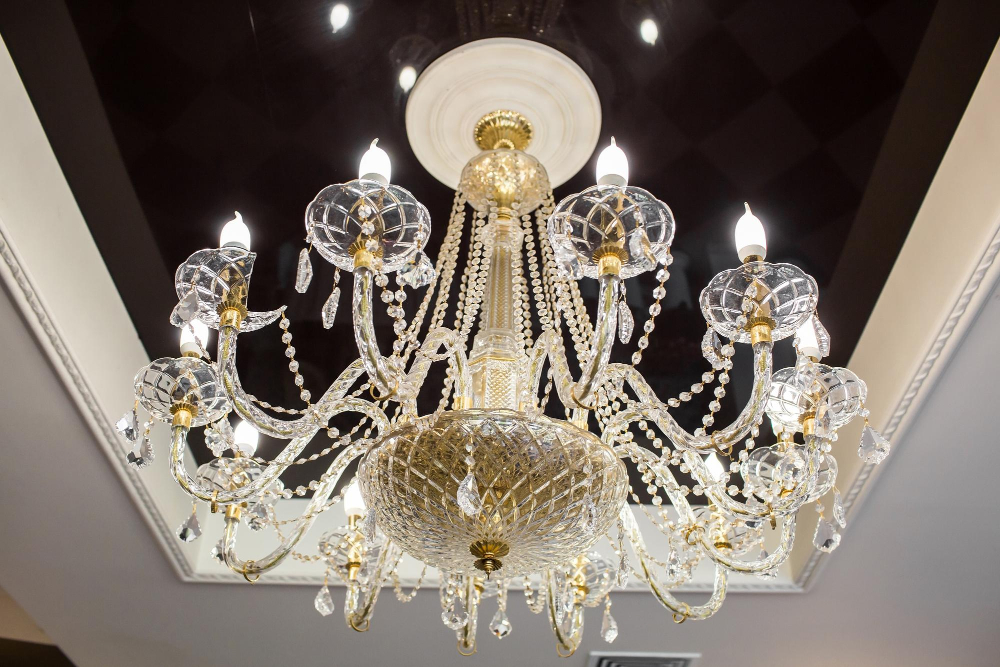
This can affect both functionality and aesthetics, as it may create shadows or glare that interfere with your activities in these spaces.
To avoid this issue, you should install your lights at the proper height based on their function and location. For example, pendant lights over a kitchen island should be hung 30-36 inches above the countertop to provide ample task lighting without obstructing views or movement.
Similarly, chandeliers over a dining table should be positioned so that their bottom hangs about 30 inches above the tabletop for optimal illumination while maintaining an intimate atmosphere.
By taking into account factors such as ceiling height, furniture placement, fixture size and style when determining light heights will help ensure consistency throughout your space while providing adequate lighting for all tasks performed in those areas.
Proper Light Placement
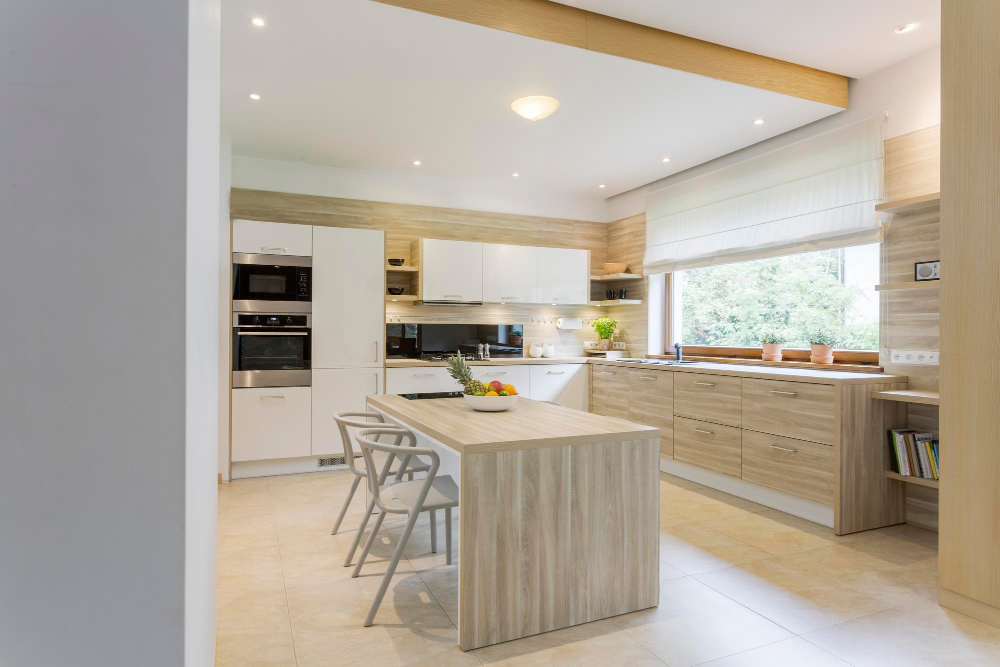
Proper placement ensures that your lights function optimally while enhancing the overall aesthetic appeal of your space.
When placing lights over a dining table, ensure they are centered above it. The bottom of the fixture should be at least 30 inches from the tabletop surface to avoid obstructing views across or around it.
For kitchen lighting, consider installing recessed downlights or pendant lamps above work areas such as countertops and islands. These provide ample task lighting without interfering with other activities in adjacent spaces.
In addition to overhead lighting, wall sconces can add an extra layer of illumination while creating a cozy ambiance in both kitchens and dining rooms. Place them on either side of artwork or mirrors for added visual interest.
Safety Precautions and Installation
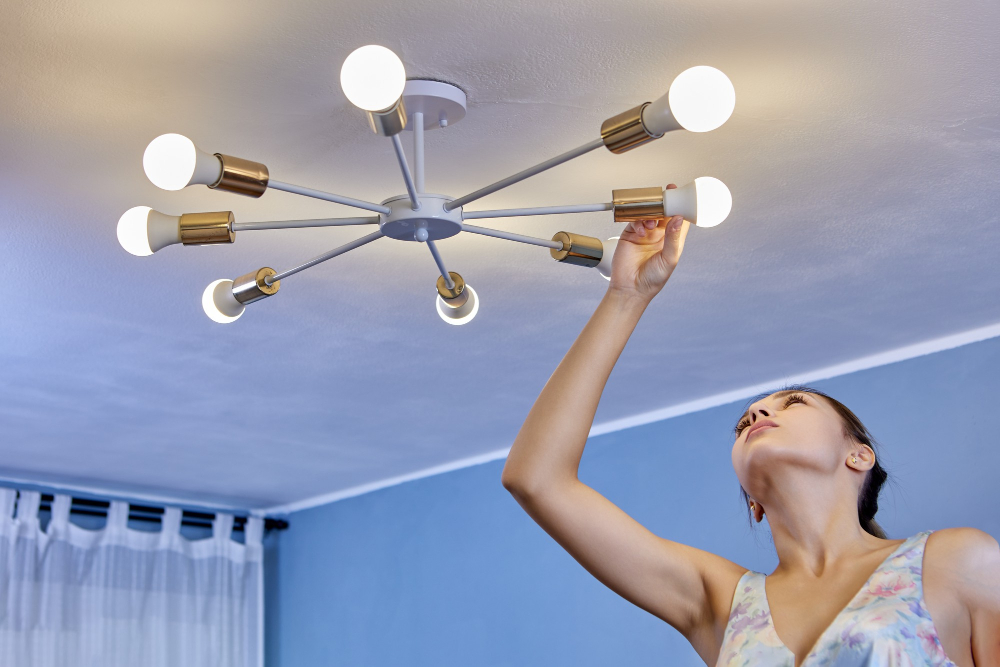
Before you start installing any light fixtures, make sure that your electrical system is up-to-date and can handle the load of new lighting. If you’re not comfortable working with electricity or don’t have experience in electrical work, it’s best to hire a licensed electrician for installation.
Ensure that all wiring is properly grounded and insulated to prevent any potential hazards such as electrocution or fire. It’s also important to follow manufacturer instructions when installing light fixtures and use appropriate tools for the job.
Consider using LED bulbs instead of traditional incandescent ones as they are more energy-efficient and generate less heat which reduces the risk of fires caused by overheating.
Balancing Light Intensity and Ambiance
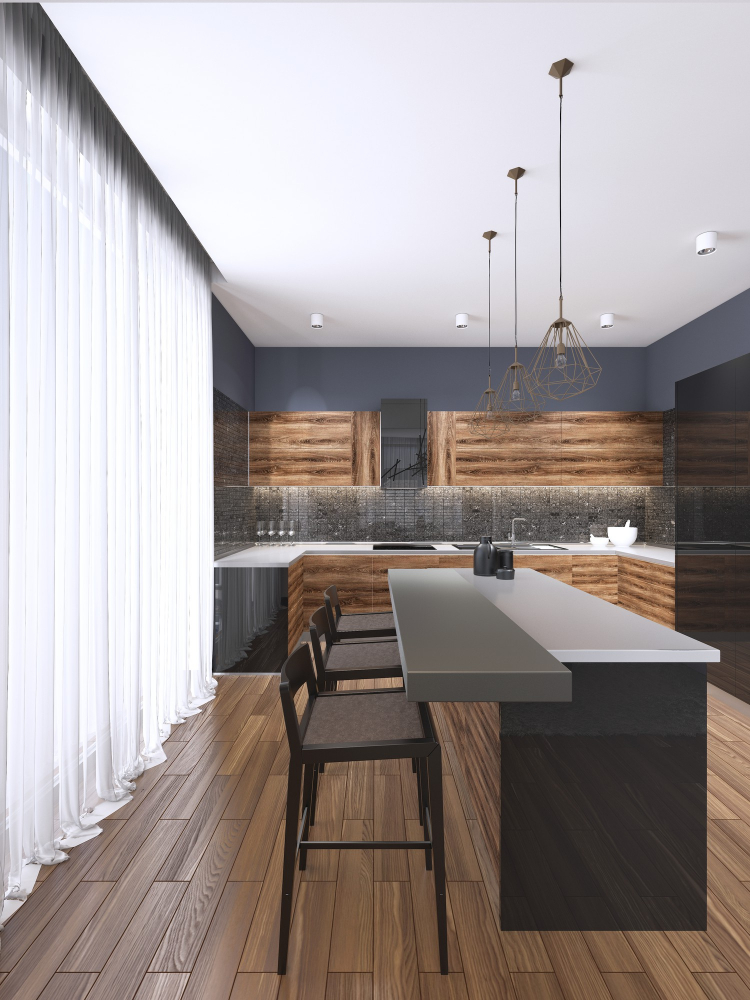
While bright lights are essential for cooking tasks, they can be harsh on the eyes during mealtime. On the other hand, dim lighting may create a cozy atmosphere but make it difficult to see what you’re eating or preparing.
To achieve a perfect balance of both functionality and ambiance in your kitchen-dining area, consider installing dimmer switches that allow you to adjust brightness levels according to your needs. This way, you can have brighter lights when cooking or doing chores while lowering them during meals or relaxing times.
Another option is layering different types of lighting sources such as ambient (general), task (focused) and accent (decorative) lighting which will help create depth in your space while providing flexibility with regards to brightness levels.
Selecting the Appropriate Light Bulbs
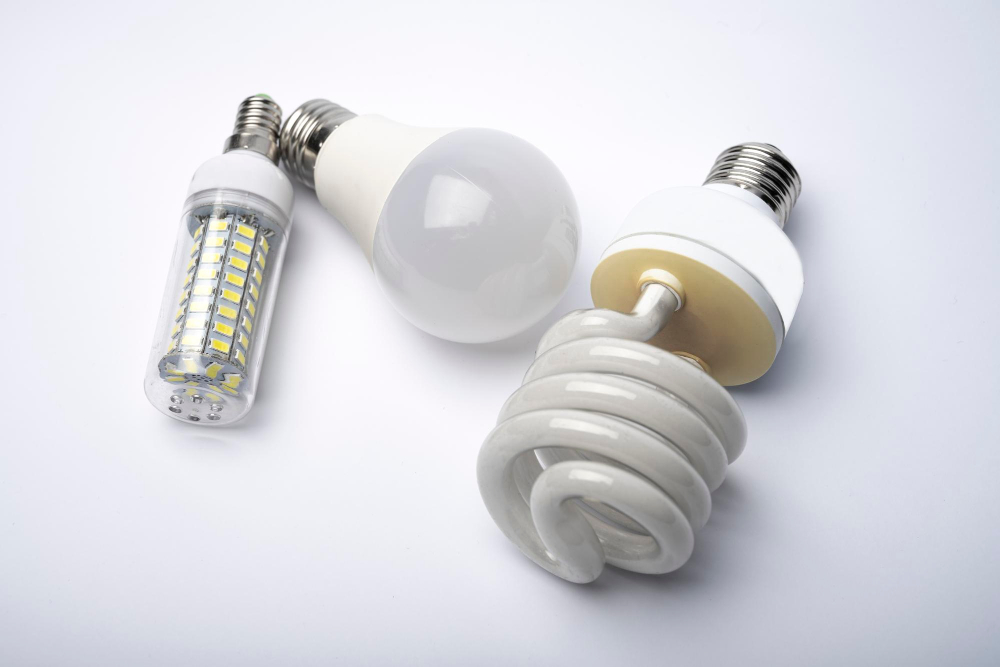
The type of bulb you choose can significantly impact the ambiance and functionality of your kitchen and dining area. There are several types of bulbs available in different shapes, sizes, colors, and brightness levels.
LED lights are a popular choice for their energy efficiency and long lifespan. They come in various color temperatures ranging from warm white to cool daylight hues that can affect how food looks on plates or countertops.
Halogen bulbs emit bright white light that is ideal for task lighting but may not be suitable for ambient lighting due to their high intensity.
Fluorescent lights offer excellent energy efficiency but tend to produce harsh blue-white light that may not be appealing in a home setting.
Incandescent bulbs provide warm yellowish tones similar to natural sunlight but consume more electricity than LED or fluorescent options.
When selecting lightbulbs consider factors such as color temperature (measured by Kelvin), lumens (brightness), wattage (energy consumption) as well as compatibility with dimmer switches if applicable.
Combining Ambient, Task, and Accent Lighting
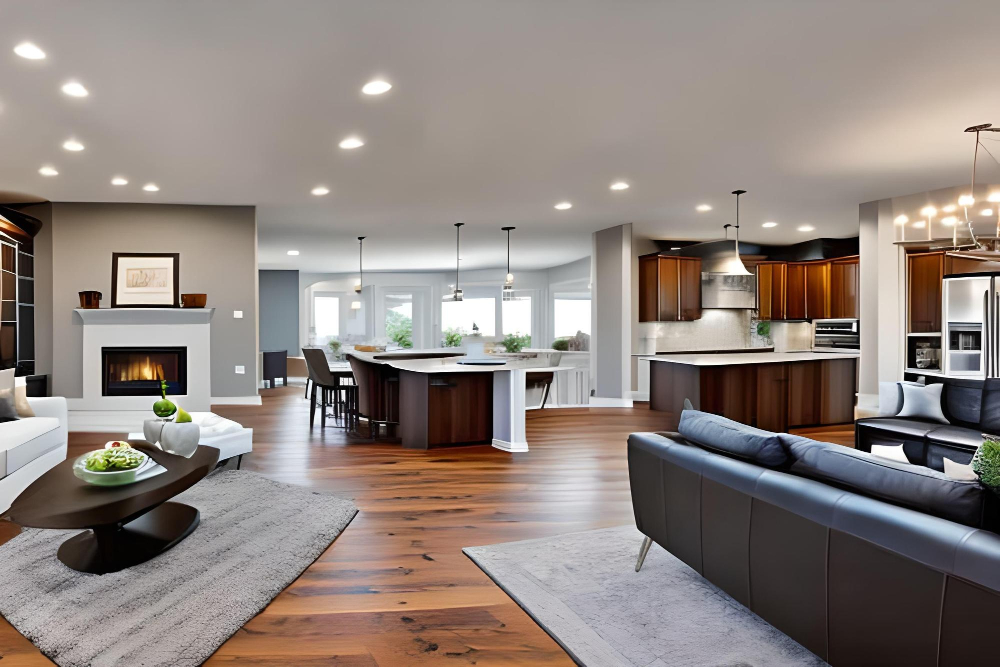
Each type serves a different purpose in creating the perfect atmosphere for your space.
Ambient lighting provides overall illumination to the room. It’s usually achieved through ceiling-mounted fixtures or recessed lights that cast light evenly throughout the space.
This type of lighting is essential for providing general visibility in your kitchen and dining area.
Task lighting is designed to provide focused light on specific areas where tasks are performed such as cooking or reading recipes at a countertop island or table setting during dinner parties. Task lights can be installed under cabinets, above sinks or stoves with pendant lamps hanging over islands being popular choices.
Accent Lighting adds depth by highlighting architectural features like crown molding around ceilings; artwork displayed on walls; decorative objects placed strategically throughout rooms – all adding visual interest while also serving practical purposes such as illuminating dark corners where shadows may form making spaces feel smaller than they actually are.
Highlighting Key Kitchen and Dining Features
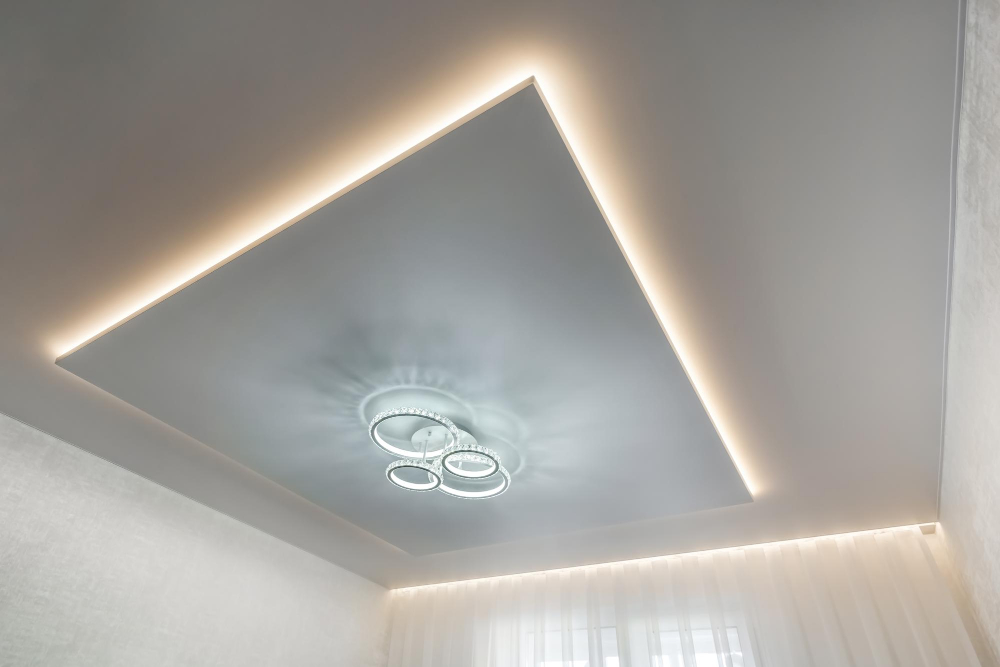
Whether you want to draw attention to your beautiful countertops or showcase your stunning chandelier, the right lighting can make all the difference.
For instance, if you have a statement piece in your kitchen like an island with unique detailing or texture on its surface, consider installing pendant lights above it. This will not only highlight this feature but also provide task lighting for food preparation.
Similarly, if you have artwork or decorative pieces in your dining area that deserve attention and appreciation from guests during meals; accent lights are perfect for illuminating them while adding depth and dimensionality to space.
By strategically placing light fixtures around these focal points in both areas of the home; they become more noticeable without overpowering other elements within their surroundings.
Remember that when selecting light fixtures for highlighting key features; keep them proportional so as not to overwhelm smaller items with larger ones.
Synchronizing Light Patterns and Textures
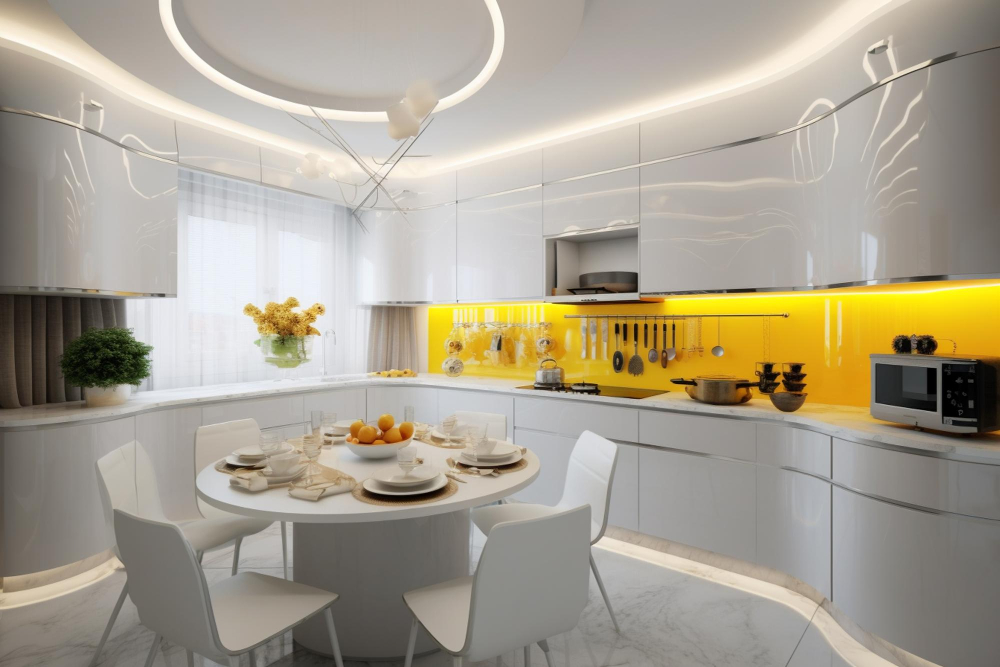
One way to create a cohesive look is by synchronizing light patterns and textures. This means that you should consider the shape, size, color temperature, intensity of each fixture in relation to others in the space.
For example, if you have pendant lights above your kitchen island with a geometric pattern on them, try matching them with similar shapes or patterns on other lighting fixtures in the room such as chandeliers or wall sconces. Similarly textured materials like glass can also be used across different types of lighting sources.
By doing this type of synchronization between all your lights’ design elements – from their texture down to their hue – creates an overall sense of harmony throughout both spaces while still allowing individual pieces stand out when necessary.
Integrating Smart Lighting Controls

With the ability to control your lights from your smartphone or voice-activated assistant, you can easily adjust the brightness, color temperature, and even set schedules for different times of day. This technology not only adds convenience but also helps save energy by allowing you to turn off lights remotely.
When integrating smart lighting controls into your home decor plan, consider how they will fit in with other elements such as furniture and wall colors. You may want to choose fixtures that complement these features while still providing optimal functionality.
Think about how you’ll use these smart controls in conjunction with other types of lighting sources like ambient or task-oriented fixtures. For example, if you’re hosting a dinner party at night but don’t want bright overhead light shining down on guests’ faces during dessert time – dimming options could be an excellent solution!
Lighting Control and Dimming Options

Lighting controls can help create a comfortable atmosphere while also saving energy. One of the most popular options is dimmer switches, which allow you to adjust the brightness of your lights according to your needs.
Dimmers are especially useful in dining areas where they can be used to set a romantic or intimate mood during dinner parties or family gatherings. They’re also great for kitchens where different tasks require varying levels of lighting intensity.
There are several types of dimmer switches available on the market today, including traditional rotary dials, slide controls, touchpads and even smart home systems that allow remote control via smartphone apps or voice commands with virtual assistants like Amazon Alexa or Google Home.
When choosing a dimmer switch for your kitchen and dining area lights make sure it’s compatible with both LED bulbs (which consume less energy) as well as incandescent bulbs (which produce warmer tones). Also ensure that it has enough capacity based on wattage requirements so that all connected fixtures work properly without flickering issues.
Incorporating Dimmers for Flexibility

Dimmers allow you to adjust the brightness of the light according to different moods, occasions, or times of day. For example, when hosting a dinner party with friends or family, you may want brighter lighting for meal preparation and serving but prefer softer ambient light during dessert or conversation time.
Dimmer switches can be installed on most types of light fixtures such as chandeliers, pendant lights, recessed lights and wall sconces. They are available in various styles that match any decor style from traditional toggle switches to modern touch-sensitive controls.
When incorporating dimmer switches into your kitchen and dining area’s lighting design plan it is important that they are compatible with the type of bulbs used in each fixture. Some LED bulbs may not work well with certain types of dimming systems so make sure you choose compatible products before installation.
Making a Statement With Lighting
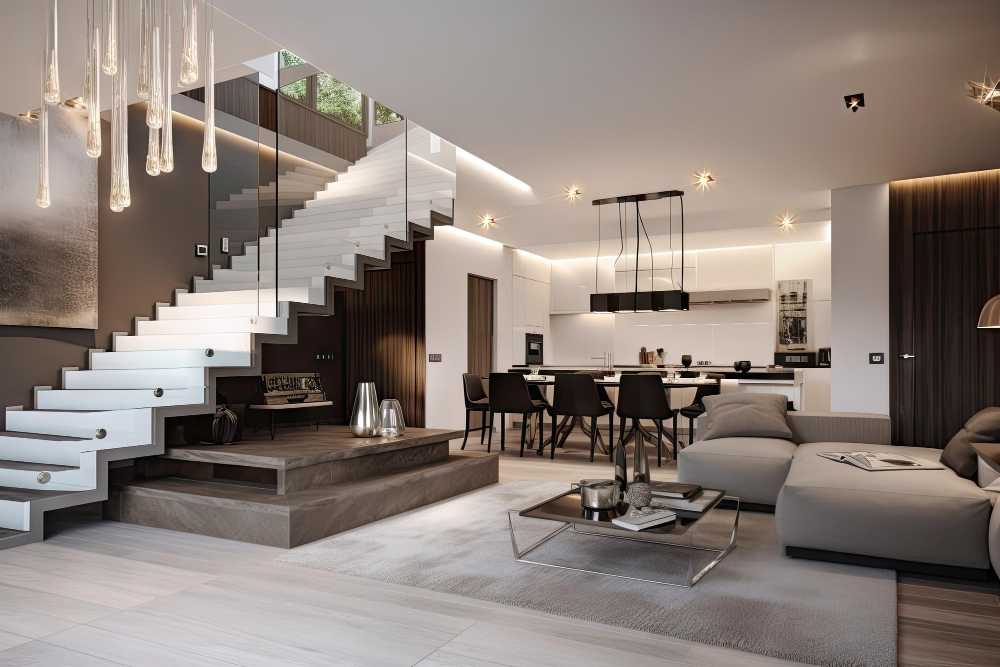
If you want to add some personality or drama, consider using unique light fixtures that stand out from the rest of your decor. Pendant lights are an excellent choice for making a statement as they come in various shapes, sizes, and colors.
For instance, if you have an industrial-style kitchen with exposed brick walls and metal accents, try adding pendant lights made of copper or brass for contrast. Alternatively, if you prefer something more modern and sleeker look for geometric-shaped pendants that complement the clean lines of contemporary furniture.
Another way to make a statement is by incorporating chandeliers into your dining room lighting design. Chandeliers come in different styles ranging from traditional crystal designs to modern abstract pieces made from unconventional materials like wood or glass beads.
Achieving Energy Efficiency in Lighting

Not only does it help reduce your carbon footprint, but it can also save you money on your electricity bill.
One way to achieve energy efficiency is by choosing LED light bulbs over traditional incandescent ones. LEDs use less energy and last longer than their counterparts, making them a more cost-effective option in the long run.
Another way to conserve energy is by installing dimmer switches or using smart lighting controls that allow you to adjust the brightness of your lights according to your needs. This not only saves electricity but also creates a cozy ambiance for intimate dinners or relaxing evenings at home.
When shopping for new light fixtures, look for those with an ENERGY STAR rating as they meet strict guidelines set by the U.S Environmental Protection Agency (EPA) regarding energy consumption without sacrificing performance or quality of light output.
Being Energy-Efficient
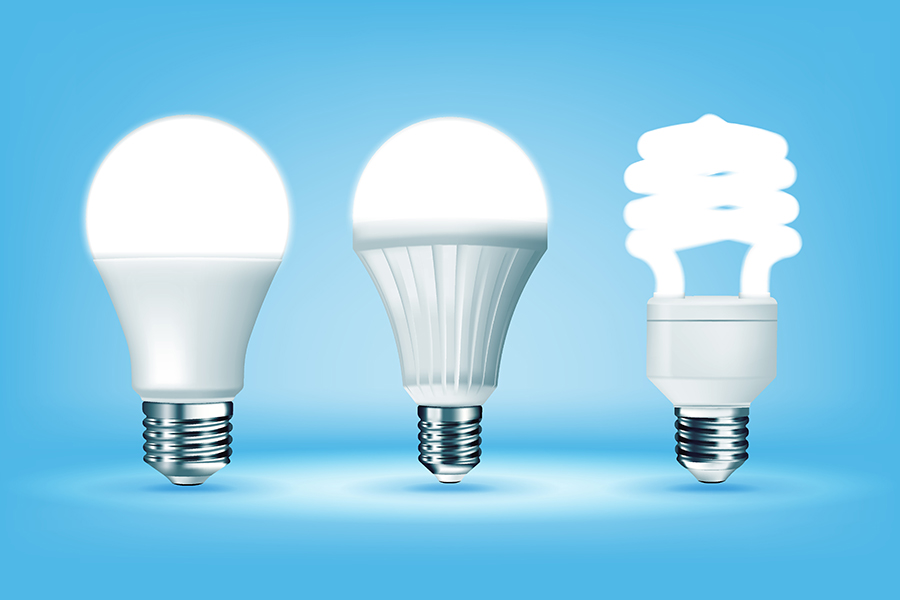
Not only does it help reduce your carbon footprint and save money on utility bills, but it also adds value to your home. When selecting kitchen and dining lights, consider choosing LED bulbs or fixtures that are ENERGY STAR certified.
These options use less energy than traditional incandescent bulbs while still providing the same amount of light output.
Another way to be more energy-efficient with lighting is by installing dimmer switches or motion sensors in areas where they make sense (such as the kitchen). This allows you to adjust the brightness of your lights based on how much natural light is coming into the room or how much activity there is in a particular area.
Budget and Cost-effectiveness

Fortunately, there are many ways to achieve beautiful lighting without breaking the bank. One of the most cost-effective options is to update your light fixtures with new shades or bulbs that complement your existing decor.
Another way to save money on lighting is by choosing energy-efficient LED bulbs that use less electricity and last longer than traditional incandescent bulbs. While they may be more expensive upfront, they can save you money in the long run by reducing your energy bills.
If you’re looking for a bigger change but still want to stay within budget, consider DIY projects such as creating pendant lights from mason jars or repurposing old lamps into unique fixtures.
Remember that cost-effectiveness doesn’t mean sacrificing style or quality – there are plenty of affordable options available that can still elevate your kitchen and dining area’s ambiance while staying within budget constraints.
Maintaining and Updating Light Fixtures
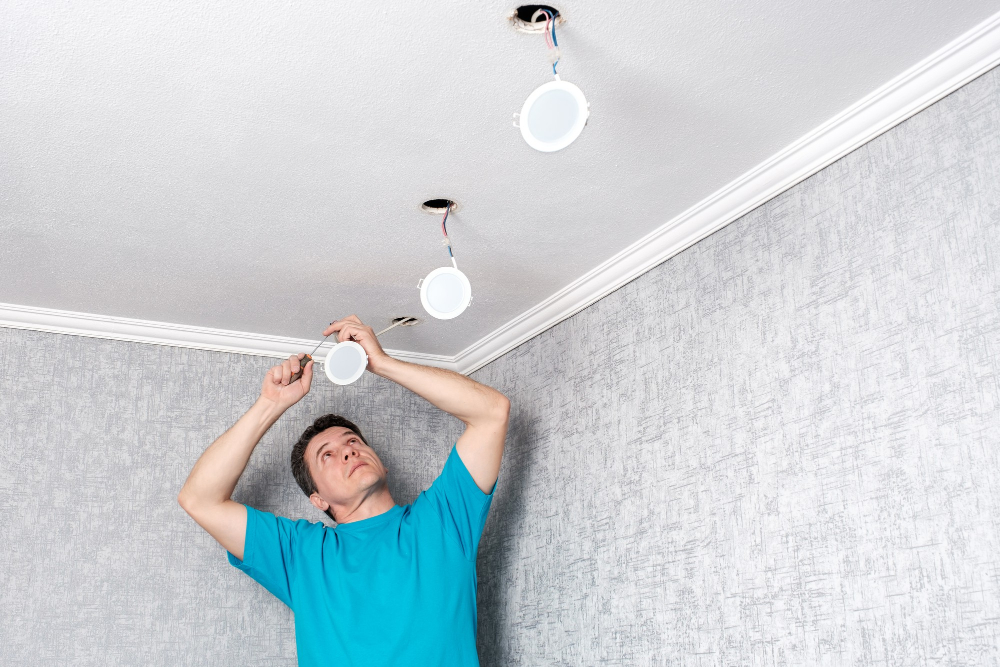
Regular cleaning of light fixtures will help keep them looking their best. Dusting the shades or wiping down the bulbs with a soft cloth can go a long way in keeping your lights shining bright.
If you’re looking to update your lighting fixtures, there are many options available that can give your space an instant facelift without breaking the bank. Swapping out outdated or worn-out light fixtures for new ones is an easy way to refresh any room’s look.
When updating light fixtures, consider choosing energy-efficient options that not only save money on electricity bills but also reduce environmental impact. LED bulbs are a great option as they last longer than traditional incandescent bulbs while using less energy.
Updating lighting doesn’t have to be expensive either; even small changes like replacing lampshades or adding dimmer switches can make a big difference in creating ambiance and functionality in any space.
Maintaining and updating kitchen and dining lights is essential for ensuring optimal performance while enhancing style elements within these spaces.
Updating Your Space With Lighting

If you’re looking to update your kitchen or dining area without breaking the bank, changing up your lighting fixtures can be a great place to start. Updating light fixtures is a simple way to give any room an instant facelift and create a new ambiance.
When updating lighting fixtures, consider the style of your existing decor and choose something that complements it well. You don’t have to stick with traditional styles; mixing modern elements into classic designs can add interest and depth.
Another option for updating lighting in both areas is by incorporating smart technology controls such as dimmers or motion sensors that allow you more flexibility while saving energy costs at the same time.
By following these tips on how to pair kitchen and dining lights effectively, you’ll be able not only elevate their aesthetic appeal but also improve functionality within them too!.
FAQ
Can you mix lighting styles in a house?
Yes, mixing different lighting styles in a house enhances the design, adds dimension, and creates a thoughtful atmosphere by illuminating various areas with picture lights, sconces, and floor and ceiling lamps.
Do all my light fixtures need to match?
All light fixtures in your home do not need to perfectly match, but they should share common features such as shape, color, materials, or styles, especially in open or connected spaces.
Do light fixtures have to match cabinet hardware?
Light fixtures do not have to match cabinet hardware, but they should complement each other and blend with the rest of the house.
How can I choose complementary lighting styles for my kitchen and dining area?
To choose complementary lighting styles for your kitchen and dining area, consider layering ambient, task, and accent lighting while balancing aesthetics and functionality.
What are some tips for coordinating kitchen and dining room light fixtures?
Consider coordinating kitchen and dining room light fixtures by choosing complementary styles, materials, and colors that create consistency and harmony between both spaces.
How important is it to match light fixtures with the overall theme of the house?
It is significantly important to match light fixtures with the overall theme of the house for aesthetic harmony and cohesion.
